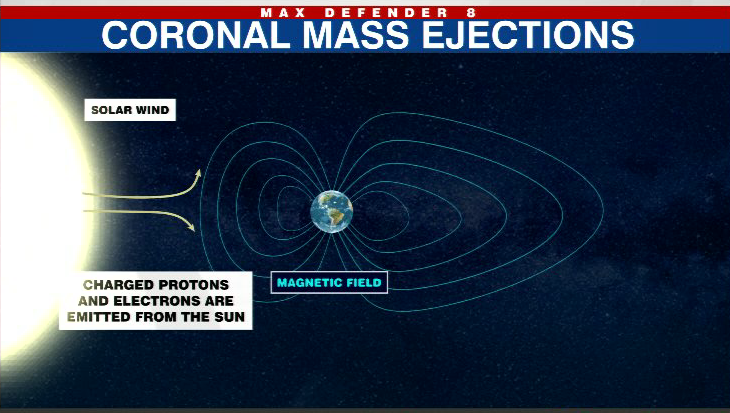TAMPA, Fla. (WFLA) – NOAA released satellite images the GOES satellite captured of a giant solar flare earlier this week. They are technically called Coronal Mass Ejections (CME) and it is a violent eruption of plasma from the sun out into the atmosphere.
Luckily this huge CME wasn’t in the direction of Earth, so we will not see any effect from it. Larger CMEs towards earth can disrupt radio frequencies and some electronic equipment.
One of the nicer side effects of CMEs are a dazzling light show. When the plasma shoots off of the surface of the sun, it gets caught up in strong solar winds that sweep it away from the sun and towards Earth.
Once the plasma gets close to Earth, it begins to be influenced by the Earth’s magnetic field.

The magnetic field is strongest near the equator and weakest at the poles. The protons and electrons comprising the plasma will slide away from the equator and toward the North and South poles where the magnetic field is weaker, and then the plasma begins to get pulled into our atmosphere by gravity.

As the plasma enters our atmosphere, they collide with different molecules throughout our atmosphere. This creates aurora, or what we call the Northern Lights.







